This post may contain affiliate links. Please read our privacy policy.
Having trouble with getting your baked goods to turn out correctly? Sometimes the solution is simpler than you think! Learn how to measure flour correctly to avoid some basic baking errors.
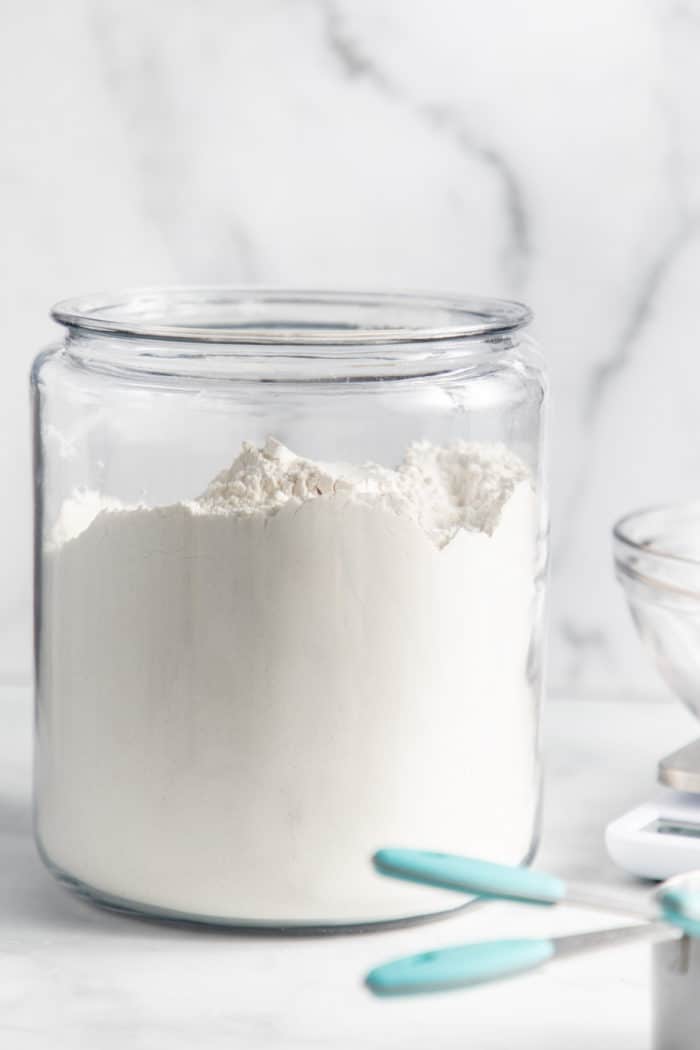
As a food blogger, I try to provide my readers with great recipes that have been tested thoroughly in my kitchen.
However, sometimes a recipe that worked well for me turns out a little less than perfect for a friend or reader.
Whenever my friends ask me why something didn’t turn out right – whether it’s my favorite chocolate chip cookies, the best chocolate cake, or homemade Bisquick, typically the first question I ask is, “How did you measure the flour?”
For years I thought dipping the measuring cup directly into the flour sack was an accurate means of measurement. However, when I started to teach myself how to bake – I realized this method can be pretty inaccurate.
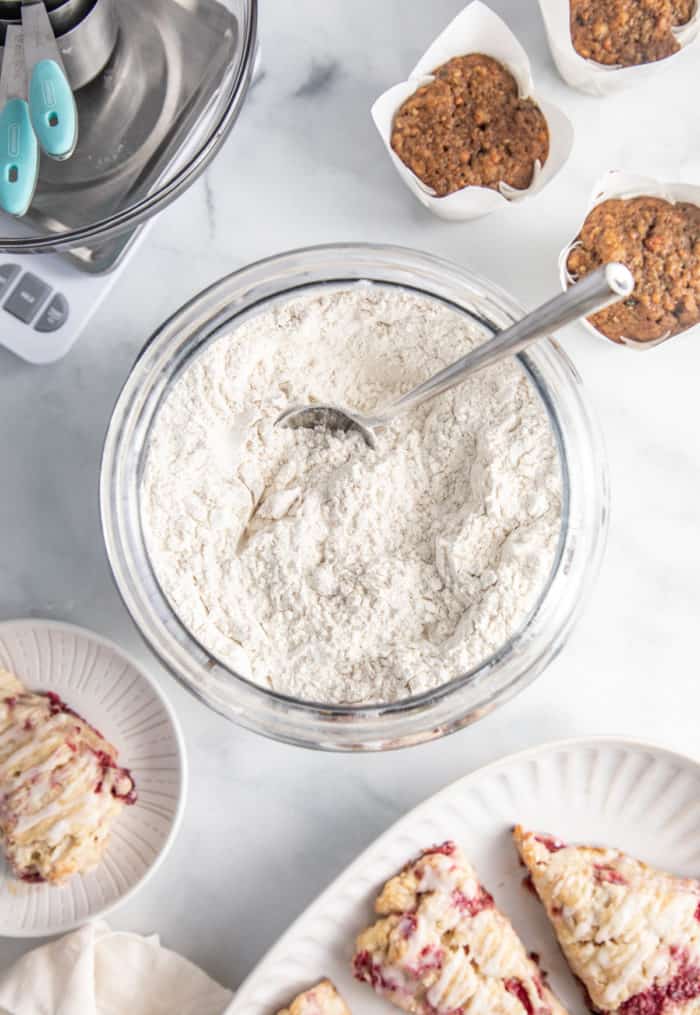
Pin this now to find it later
Pin ItWhy Your Measuring Method Matters
I decided to conduct a little kitchen experiment and measure a cup of all-purpose flour two ways.
Here were the results:
- Scooping a measuring cup into the flour and leveling: 6 oz in weight
- Spooning the flour into a measuring cup and leveling: 4.25 oz in weight
Pretty big difference, right? Especially when it comes to baking. Because just a couple extra ounces of flour can really change the texture of a baked good.
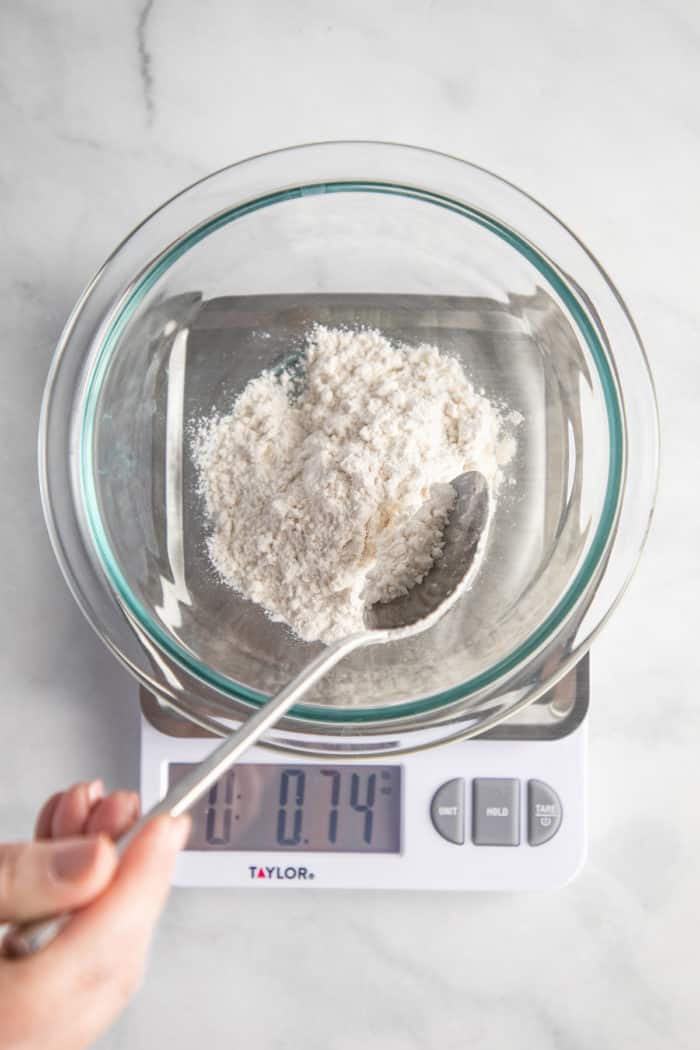
The important thing to remember is that, much like brown sugar, flour packs. Scooping the ingredient with your measuring instrument will cause packing.
Packed flour can add up quickly!
If you have a recipe with 3 cups of flour, and you scoop using your measuring cup, you could end up with 18 ounces of flour, when in reality you should have 12.75 ounces of flour.
That’s nearly an extra 3/4 cup of flour in your recipe!
That can dramatically change the results you get from a finished baked good.
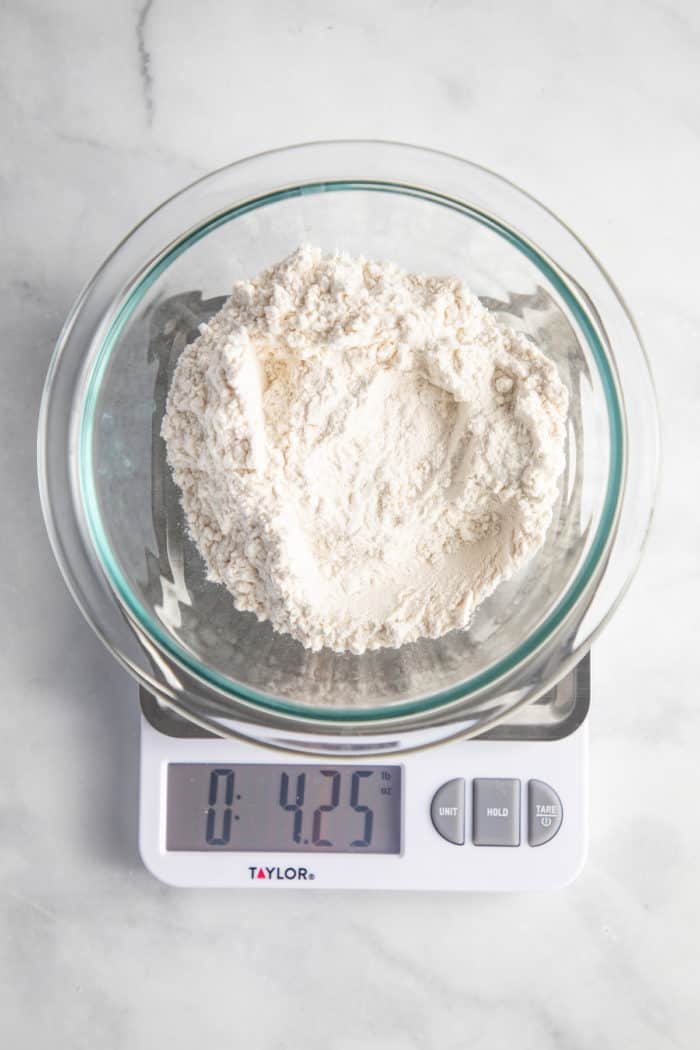
How to Measure Flour for Baking
Flour measurements can be one of the biggest variables when it comes to the finished product in baking. Weighing ingredients is by far the most accurate, but not a common practice here in the U.S.
If you’re an Alton Brown fan – like I am – you know from Good Eats that this is pretty much the only way he measures dry ingredients.
A digital scale can come in handy and is useful for more than just measuring your sugar and flour.
I use mine a lot to weigh small packages for click and ship labels via USPS, and they are also great for figuring out correct portions of meat and other items when needed.
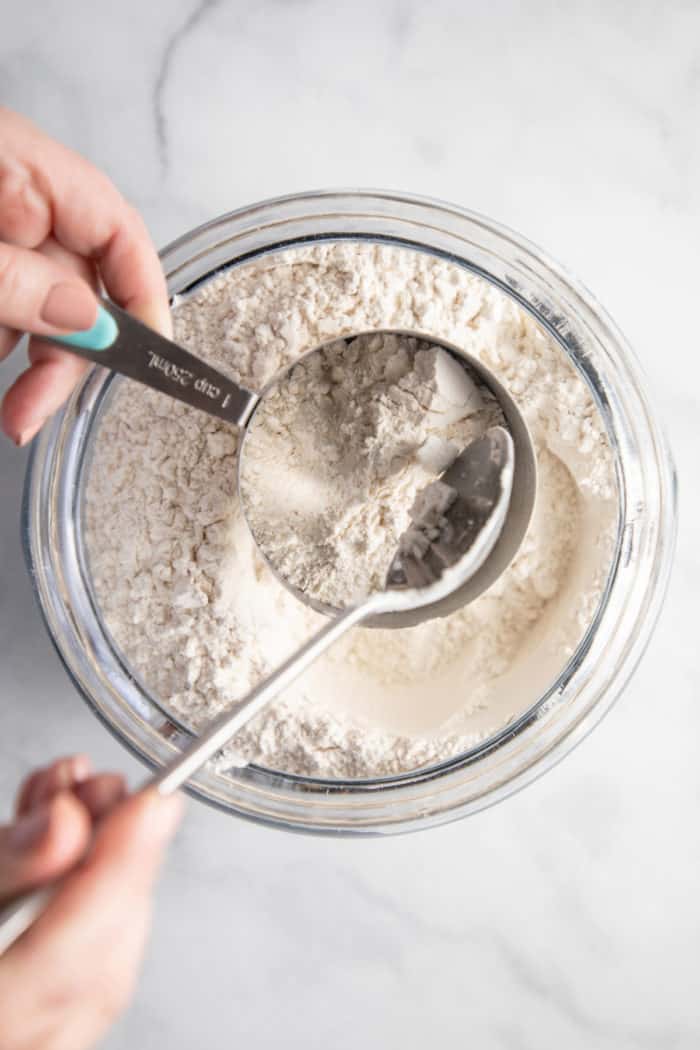
How do I Measure Flour Without a Scale?
If you don’t own a scale, when it comes to dry ingredients, you’re more than likely using a measuring cup.
Many people use measuring cups with perfect results. But remember that they can be incredibly inaccurate depending upon the method of adding the flour to the cup that you use.
What measuring cups should you use?
Although I grew up using both liquid and dry measuring cups, I’ve come to realize through blogging that a lot of people don’t own both types of cups and some don’t know that two types of measuring cups exist.
So, let’s start with the basics – if you’re going to bake, I strongly recommend picking up a set of dry measuring cups as well as at least one liquid measuring cup.
Both can be found in pretty much any store including places like Target, Amazon, the grocery store and even the dollar store.
Make sure you use the dry measuring cups for measuring flour, sugar, and other dry ingredients. Save the liquid measuring cup for milk, water, and other liquid ingredients.
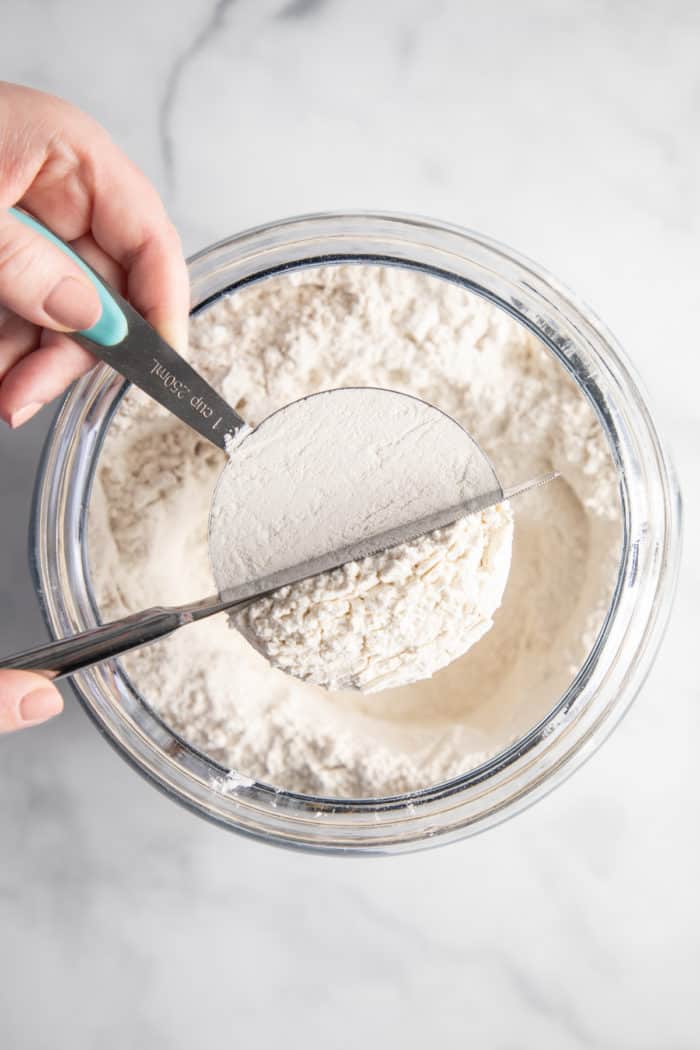
How to get an accurate flour measurement with a measuring cup
Here’s how to get a pretty accurate measurement without the use of a scale:
- Use a spoon to fluff up the flour within the container.
- Use a spoon to scoop the flour into the measuring cup.
- Use a knife or other straight edged utensil to level the flour across the measuring cup. I have a plastic straight edge that I keep in my flour bin at all times for just this purpose.
And that’s it! Now you know how to measure flour the right way so your baked goods are as perfect as possible.
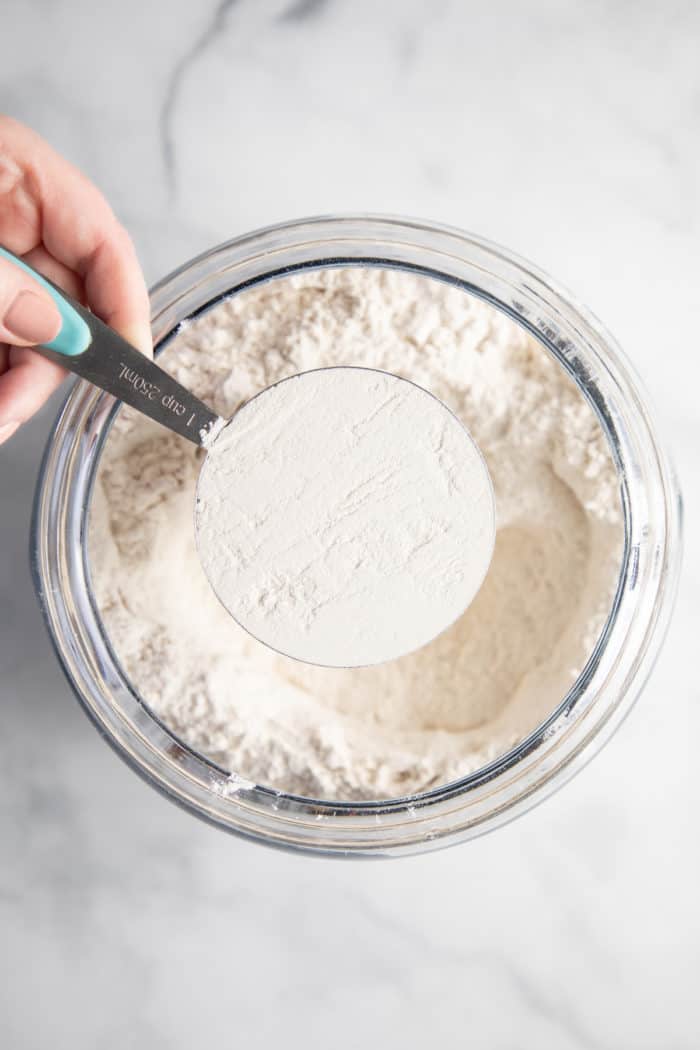
Commonly Used Weight Measurements
Here are some helpful common volumetric measurements and their weight equivalents for quick reference.
All measurements are in ounces by weight, not fluid ounces.
Flours
- all-purpose flour: 1 cup weighs 4.25 ounces
- cake flour: 1 cup weighs 4 ounces
- bread flour: 1 cup weighs 4.25 ounces
Sugars
- granulated white sugar: 1 cup weighs 7 ounces
- confectioners’ sugar (powdered sugar); unsifted: 1 cup weighs 4 ounces
- light or dark brown sugar; packed: 1 cup weighs 7.5 ounces
Butter
- butter: 1 cup weighs 8 ounces
I also definitely recommend printing out a copy of this Ingredient Weight Chart from King Arthur Flour. I laminated mine because I am kind of a messy baker. The list hangs from the side of my fridge, and I can honestly say it is one of my most used kitchen resources.
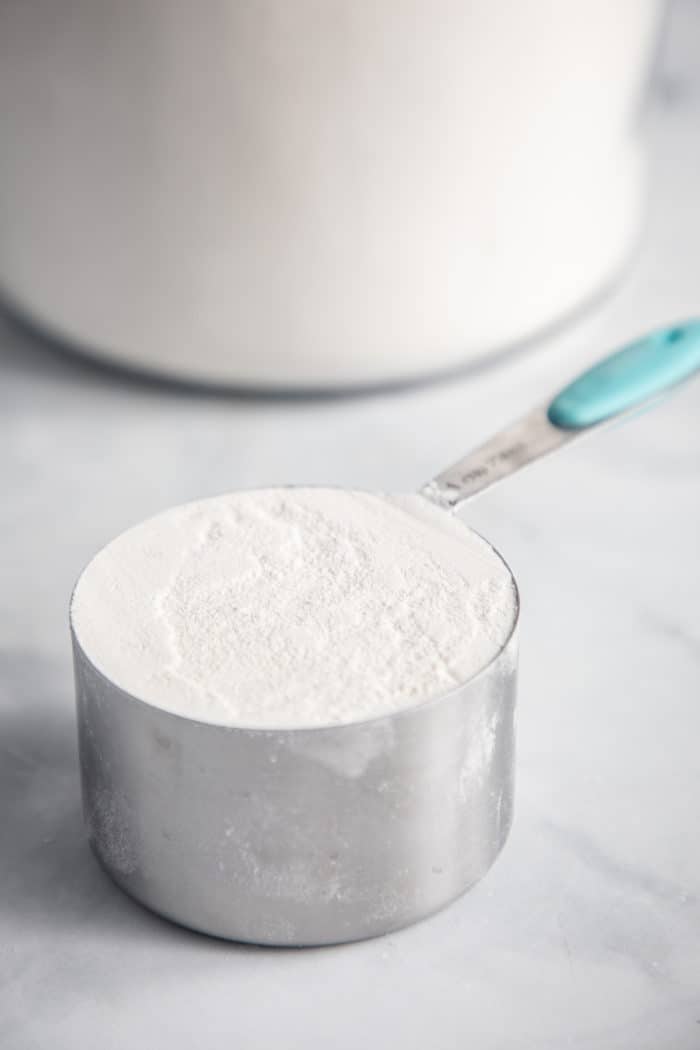
More Helpful Kitchen Tips
Whether you’re a beginner baker or a veteran in the kitchen, there are a few kitchen substitutes and tips that are helpful to keep in mind.
Whip up this simple buttermilk substitute to use in any baking recipe calling for buttermilk.
This brown sugar substitute is also a handy trick to keep in mind in case you find yourself out of brown sugar while in the middle of baking.
It’s also handy to know how to soften butter and how to soften cream cheese quickly! I always forget to set mine out, so I use these tricks all of the time.
How to Measure Flour
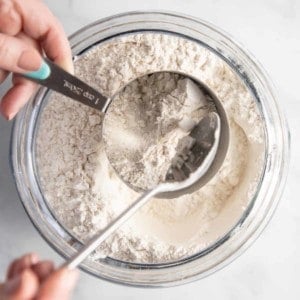
Equipment
- Spoon
- Knife or other straight-edged utensil
Ingredients
Instructions
- Use a spoon to fluff up the flour within the container.
- Use a spoon to scoop the flour into the measuring cup.
- Use a knife or other straight-edged utensil to level the flour across the measuring cup. I have a plastic straight edge that I keep in my flour bin at all times for just this purpose.
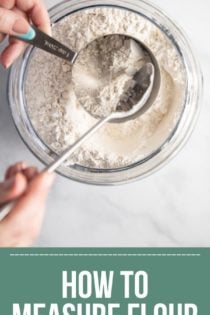
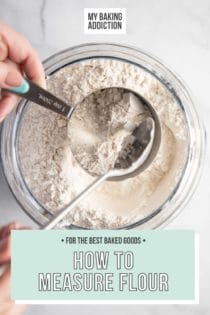
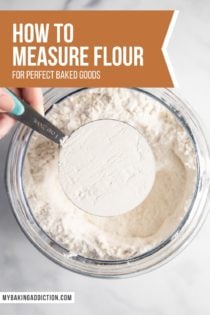
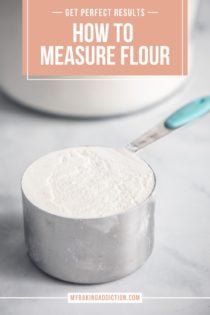
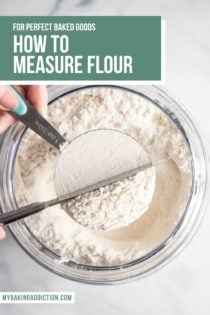









Thank you for this post. A lot of people measure flour incorrectly and it is a big baking pet peeve of mine! I have one of those big “simple human” containers that I store my flour in, and just keep a spoon for scooping and a knife for leveling in there all the time.
To confuse matters more, humidity can alter the amount of flour needed for a recipe. I find that when I bake at my parents’ condo in FL, I need to add more flour to things like pizza dough and pretzels than I do when I’m at home in Toronto.
What a great resource! Thanks for sharing!
I’m printing those weights out and taping them onto the inside of my cupboard!
thanks for this article!!! it’s so useful! i love it and L-O-V-E the video… thanks so much!
I made peanut butter cookies the other day. In my search for keeping my cookies soft, I read something about using a spoon instead of scooping with the cup..I did that and it made a HUGE difference! Thank you for this post :D I have a scale and think I may try baking a cake again, something I have not gotten right yet, but this time, weighing my dry ingredients :D
I love your back to basics article. How do you measure sifted flour? Do you measure the flour before it is sifted or after? Love, love, love your blog!
Thanks for the great tip.
When I took home economics in high school, our teacher taught us to measure flour correctly. One tip she taught us (that the video didn’t mention) was when leveling the flour at the end, use the back of a knife and divide the overflow in to thirds. We then pushed the excess off in three different directions. Pushing simply from right to left may add extra flour by pushing it back into the measuring cup.
Love this article. I am a pastry chef and used to using scales. Most cookbooks use cups and spoons for measuring so this chart will be very handy to convert to weight measurements. I’m taping my copy to the inside of my kitchen cabinets. Thanks, love your blog.
I had no idea that it could affect it that way! Great info for all of us trying to be as great as you!